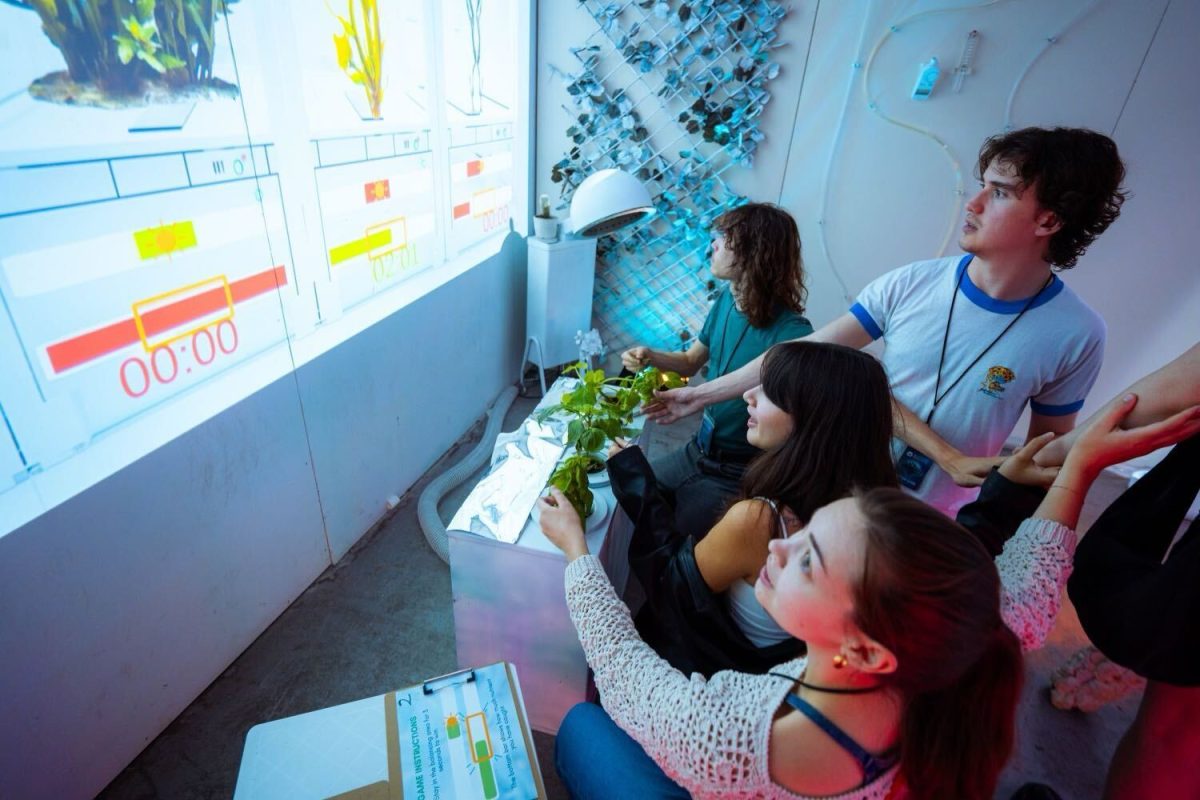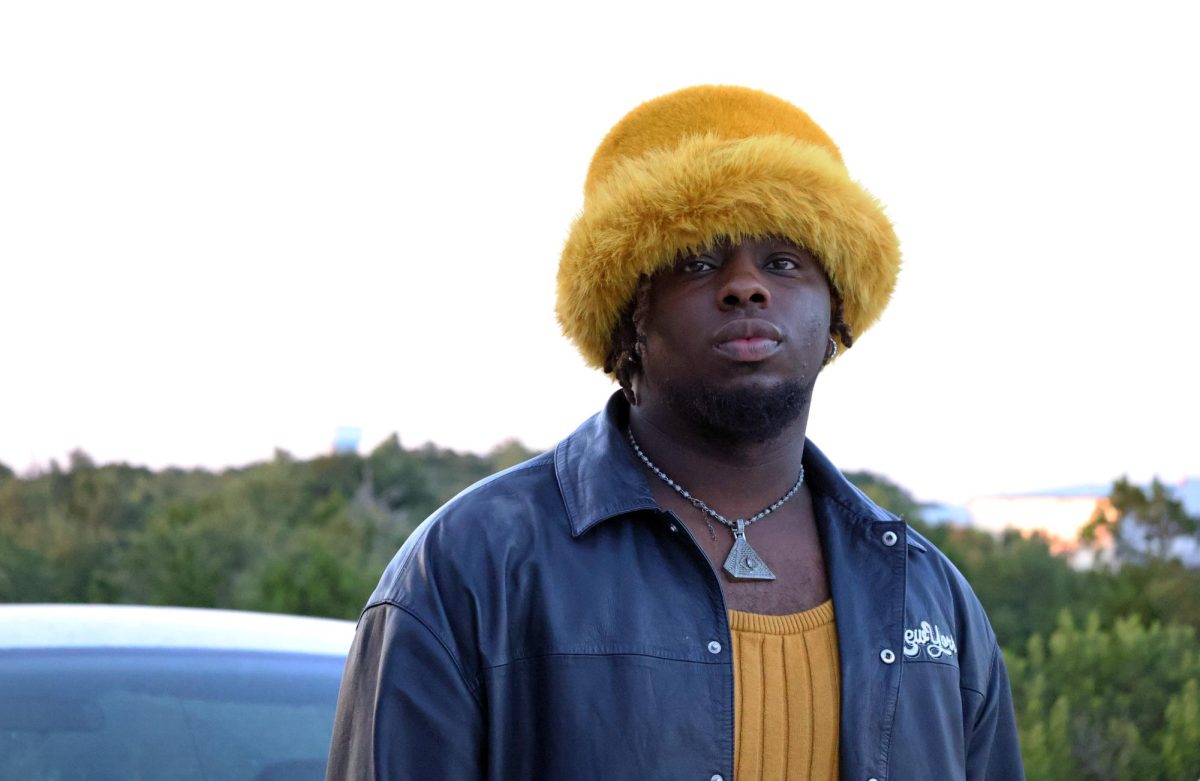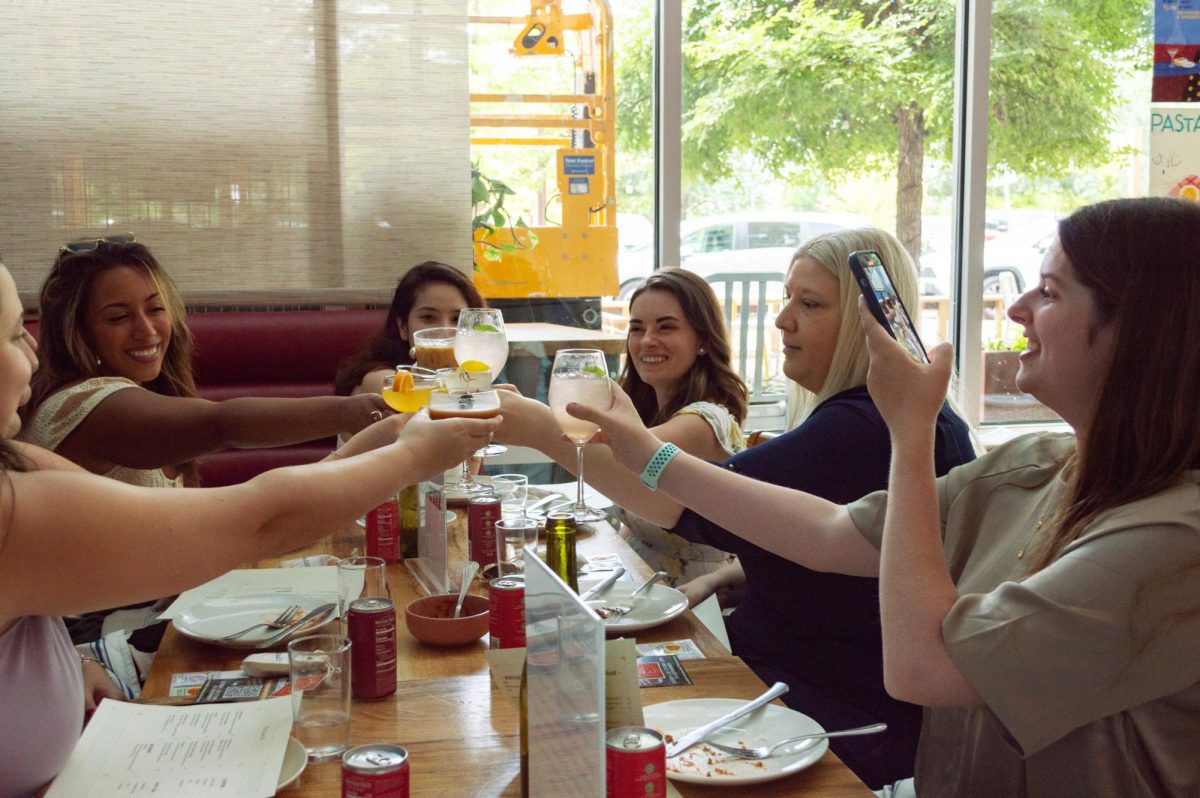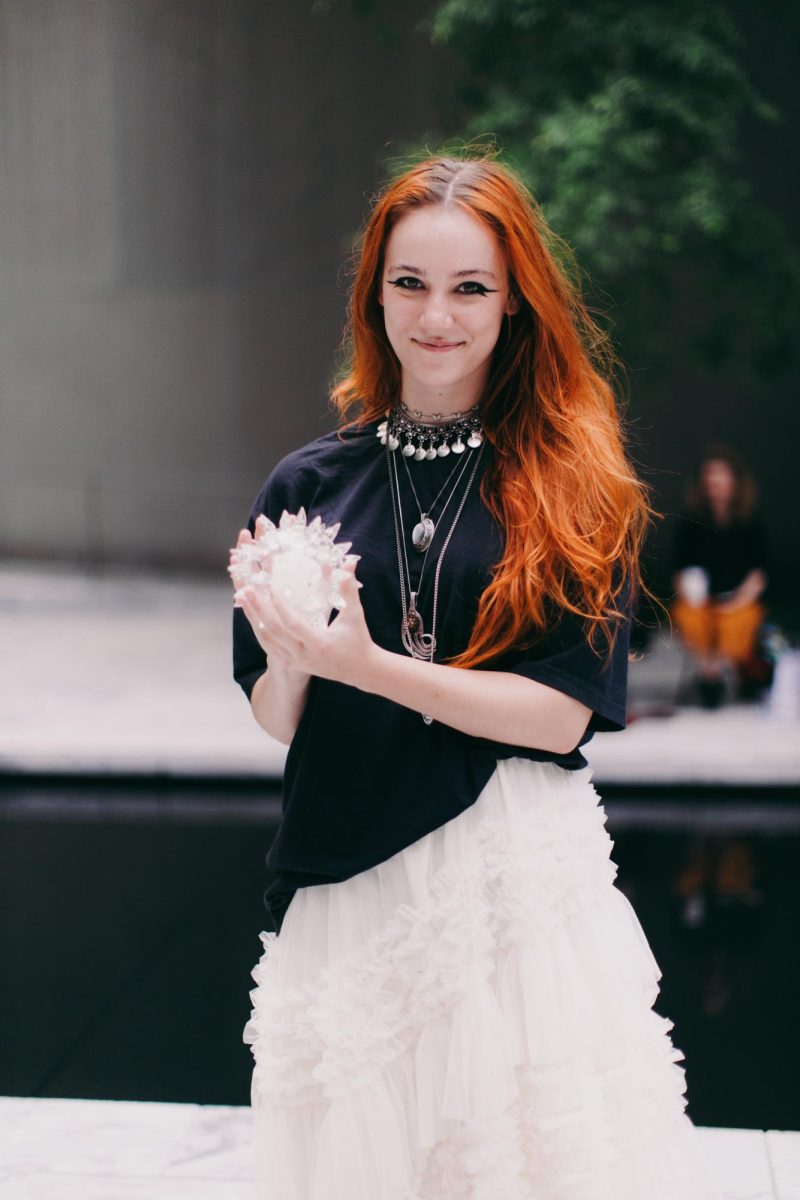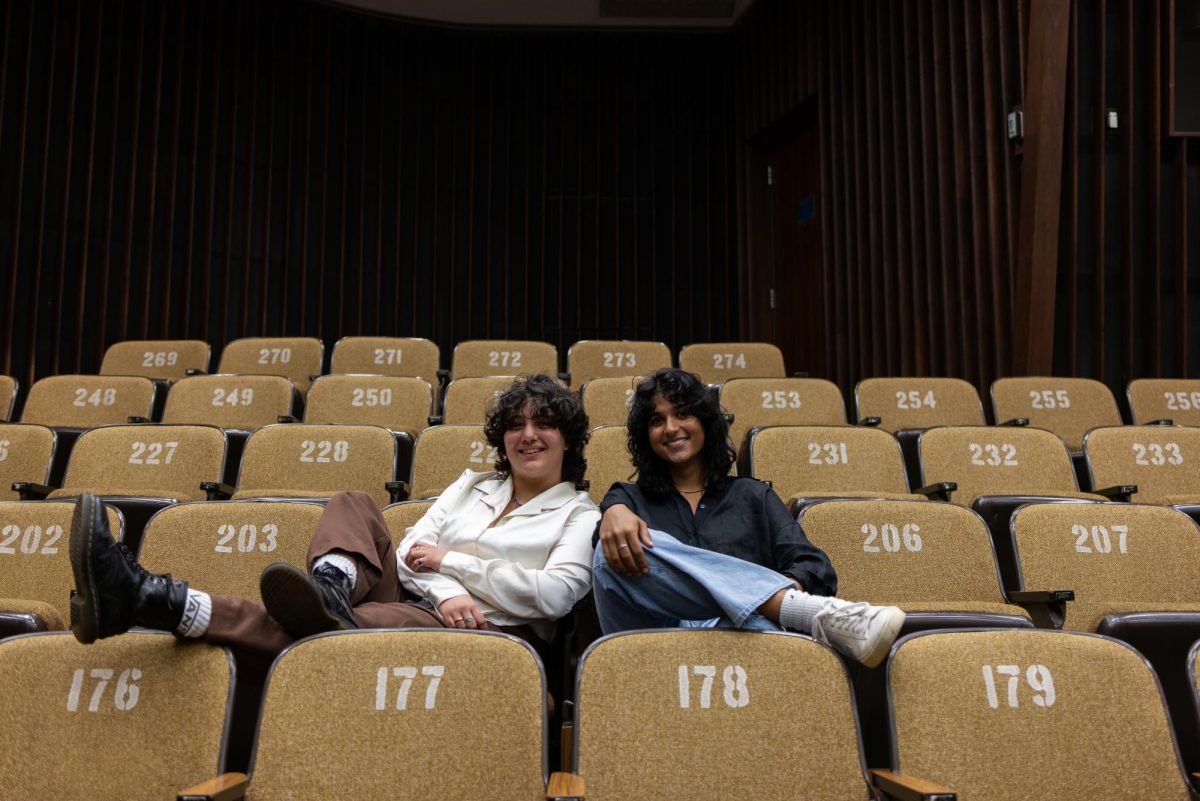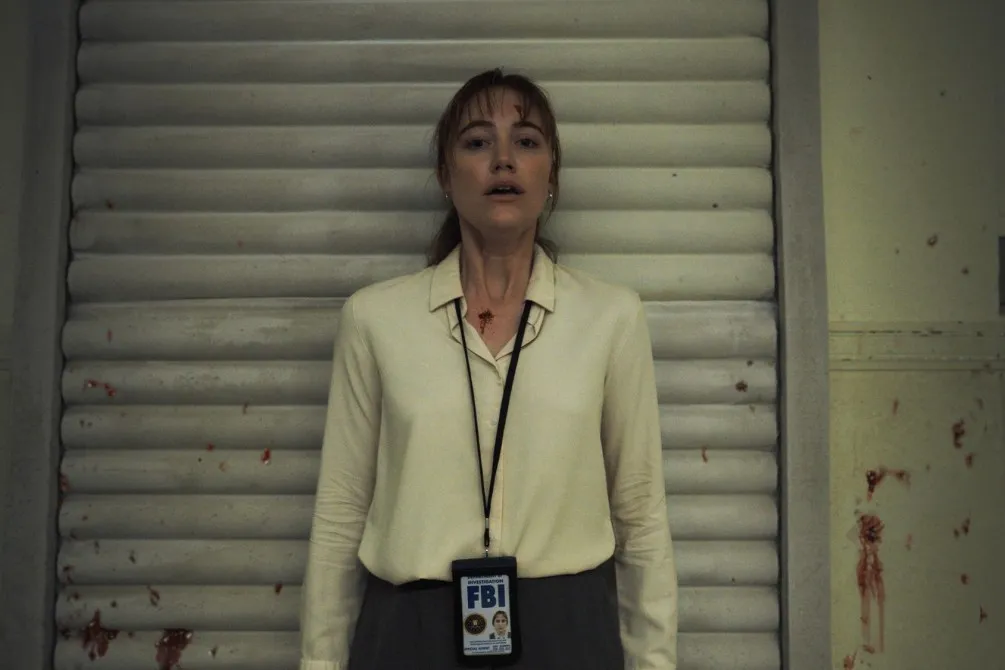Intoxicated by the smoke from burning raw cotton and pine sawdust, the Italian bees crept out of their hive to sip on the honey drizzled on the edge of their wooden box home. Yellow specks of pollen dusted their delicate wings and striped torsos. As the mass of bees filed out to claim their share of the sweet, their murmur amplified, drowning out the sound of passing cars.
This hive, just off of Sam Bass Road in Round Rock, is just one of local beekeeper Conrad Bouffard’s 4,000 state-registered hives, scattered across Austin’s surrounding areas. From Hutto to Kingsland to Georgetown to Bee Caves, more than 150,000 bees work diligently to produce 120 to 180 pounds of natural raw honey for his company, Round Rock Honey, per year.
There are more than three laborious months until the bees fill the hive with 40 pounds of honey.
Covered head-to-toe in a white, ventilated bee suit, Bouffard visits eight to 10 hives every now and then, refilling the hive’s supplementary water gallon or realigning those pestered by raccoons and skunks. Bees are self-sustaining, he said.
Of the 700 bee stings Bouffard has gotten, only one has landed him in the emergency room. He says that bite on his chin was the result of his laziness of not putting his bee protector suit on.
“I never, never go without a suit now,” he said.
Besides traveling to flowers, drinking their nectar and regurgitating it into honeycombs to make honey, bees are integral to nature’s circle of life, Bouffard said. Pollen rubs onto their bodies and falls off onto the ground as they fly, increasing the land’s richness. Their touch stimulates plants and trees.
“Think of it like if you have five rubber balls and you throw them into a kindergarten playroom, they would be much more excited than if they didn’t have those rubber balls,” Bouffard said. “Bees are like those rubber balls. They encourage the plants to be more active.”
Bees travel up to four square miles from their hive but usually like to stick close to home and prefer to feed off of one large plant. If there was a persimmon tree, for instance, the bees would suck the nectar until it runs out.
A vital component to making honey is moisture. Without water, plants die, leaving no nectar for honey.
Currently under a dry spell — with no heavy downpours for the past three months — wildflowers and vegetation are scarce for bees to feed on in Texas. But Bouffard said he’s not worried.
“Even though we are looking at a drought that’s probably severe this summer, we’re set,” Bouffard said.
As an operating company, Bouffard said he has to plan in advance for disasters. This includes placing hives in prime locations where there’s water and an overgrowth of greenery.
“We had [a drought] two years ago, and we were still able to get through it,” he said. “And the way we do that is we find little gold mines of moisture.”
Lined up at the perimeter of a flourishing grove are 10 of Bouffard’s newest brood chambers, or the nursery areas, where the queen bee, mother of the hive, lays 1,000 eggs a day. With a lifespan of 30 days, bees spend it working in the super chamber where honey is made.
Warmer temperatures are good for honey production, but tropical climates are even better because there’s more vegetations, Bouffard said. An ideal location for bees would have a mixture of coniferous and deciduous, or hard wood and evergreen, trees.
The taste and color of honey is controlled by the plants and trees, Bouffard said. Each batch of honey is always different, but Round Rock Honey are generally of a thicker viscosity and darker chestnut color, compared to East Coast Honey’s general light mixture of black locust and clethra.
The first time Bouffard ever sold honey was on the opening day of the first farmer’s market in Austin more than 15 years ago.
“I’ve always been a farmer at heart, even though I’ve never owned a farm,” he said, adding that while he was in college at Southwestern University he was famous for having tomatoes, squash and peppers growing out of his dorm room’s window.
So when the market opened up, Bouffard took what little vegetables he’d grown from his personal garden to sell, including a few jars of honey he made from four bee hives he bought on the Internet out of fascination.
“The honey sold in a matter of minutes, while the vegetables took all day,” he said.
The next week, he brought more honey to the market. He said he would use his profits to buy more hives to make more honey, until one day, he said a beekeeper gave him 1,000 of her hives.
“It was like you suddenly found something that had potential value for a unique hobby, that could change your life,” he said.
Since Bouffard’s beekeeping expertise lies in honey making, he outsourced his bees, buying nucleus hives from another beekeeper who specifies in growing bees. Nucleus hives are packaged bees that have an already established colony with a queen bee that’s ready to lay eggs.
Just like a doctor, you have to have a focus or a specialty, he said. His craft just ended up being honey.



